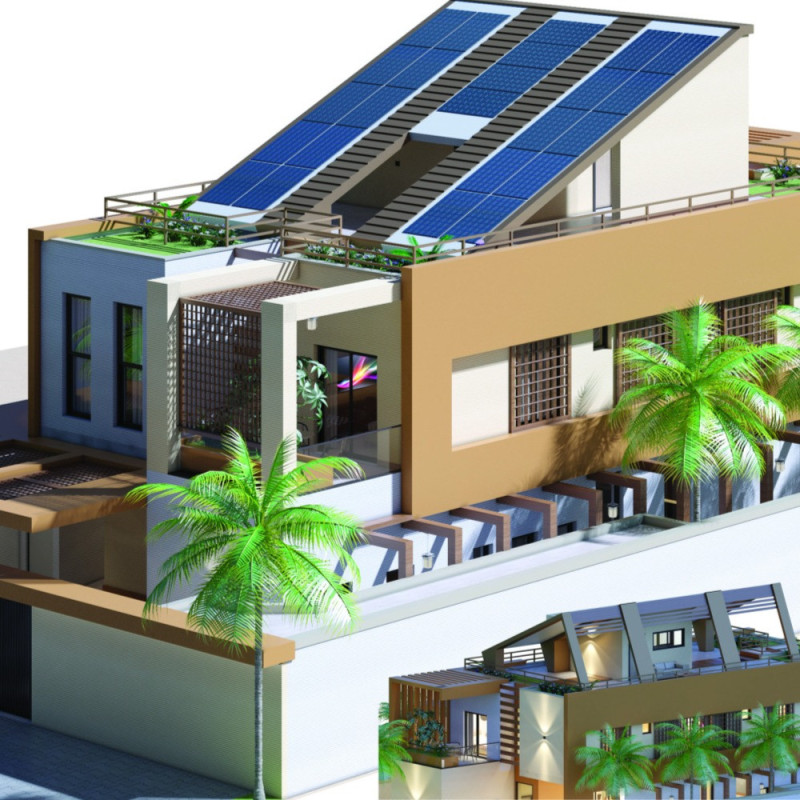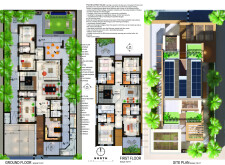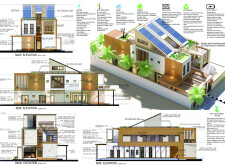5 key facts about this project
### Overview
Located in Dubai, this project represents a pioneering approach to sustainable living through the use of advanced 3D printing technology. It focuses on integrating environmental considerations with contemporary lifestyle needs, drawing from the unique social and climatic context of the Emirates. The design aims to establish a new paradigm for housing by merging luxury, functionality, and eco-friendliness.
### Sustainable Design Strategies
The project incorporates several sustainable strategies, including a water desalination plant, rainwater harvesting systems, and a rooftop solar energy grid, aimed at minimizing reliance on conventional energy sources and reducing the overall carbon footprint. Effective natural ventilation and thermal comfort measures are embedded within the design, tailored specifically to Dubai’s climate. The arrangement of open living spaces promotes interaction and connection with the outdoors, reinforcing a balance between built and natural environments.
### Material Innovation and User-Centric Layout
The choice of materials enhances both sustainability and aesthetic appeal. Key materials include 3D-printed concrete, lightweight metal frames, recycled steel, and double-glazed windows, each carefully selected for its structural and thermal properties. The layout features a spacious ground floor that integrates living, dining, and kitchen areas with surrounding garden spaces, while the first floor houses private quarters to ensure comfort and seclusion. Adaptability is a core element of the design, allowing spaces to evolve based on the occupants' changing needs. The integration of smart home technology further enhances user experience, facilitating energy management and overall convenience.






















































